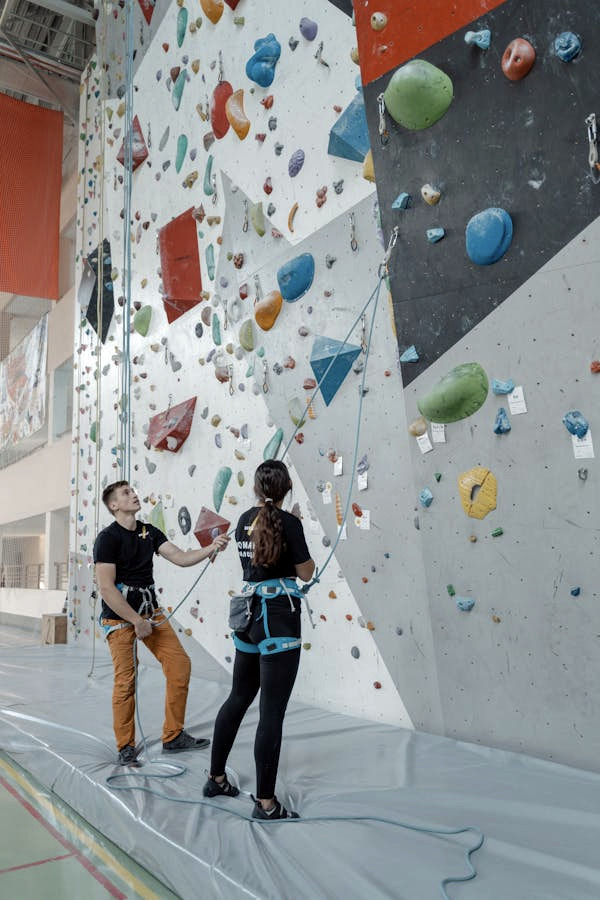Climbing in Midlife: A Beginner’s Guide to Adventure and Fitness
- Jan 27
- 3 min read
Updated: Feb 10
Climbing is more than just an adrenaline-pumping activity; it’s a full-body workout that can transform your physical and mental health. Whether you’re scaling indoor walls or exploring outdoor cliffs, climbing offers an unparalleled sense of accomplishment and a unique way to stay active in midlife. Here’s why you should consider climbing, where to start, how to train, and the essential gear you’ll need.

Why Climb?
Climbing isn’t just about reaching the top of a wall—it’s a journey that enhances:
Grip Strength: The repetitive action of gripping holds builds forearm and hand strength, which can improve your ability to perform everyday tasks and reduce the risk of injury.
Coordination and Balance: Strategizing your moves and maintaining control on the wall helps improve body awareness and coordination.
Concentration and Focus: Every climb is like a puzzle, requiring mental clarity and decision-making skills. Staying present while climbing can even serve as a form of mindfulness.
Adventure and Exploration: Climbing provides a thrilling sense of discovery, whether you’re exploring a bouldering gym or tackling a new outdoor route.
Community: The climbing world is incredibly supportive, filled with people of all ages and abilities cheering each other on.
Where to Start?
If you’re new to climbing, start with indoor gyms. They offer controlled environments with routes suited for beginners. Focus on learning the fundamentals, like the backstep. This technique, where you place your outside foot on a hold and twist your hips into the wall, helps you move efficiently and conserve energy. It’s best practiced on a bouldering cave or spray wall with random holds.
Here are some key tips for beginners:
Weight in Your Feet: Aim to shift your weight to your feet rather than pulling yourself up with your arms. This takes practice but will save energy.
Avoid Bent Elbows: Keeping your arms straight improves blood flow and prevents forearm fatigue.
Remember, it’s okay to feel awkward at first. Mastering techniques like the backstep will make climbing feel smoother and more enjoyable over time.
How to Train?
Training for climbing involves building strength, flexibility, and endurance. Here are some targeted exercises:
Core Strength
Climbing demands strong obliques and core stability. Incorporate the following routine:
Sit-ups
Side plank with dumbbell row
Reverse table with leg extension hold
Super pushups
Bird dog hip rotations
Windshield wipers
2-point plank
Seated L sit (advanced)
Kayakers
Dowel rolls for wrist and forearm strength
Wrist and Finger Strength
Did you know that finger flexion (gripping a hold) depends on wrist extensor strength? Weak extensors force you to grip harder, fatiguing your forearms. Include wrist exercises in your routine to maximize grip efficiency.

What Gear Do You Need?
Getting started with climbing doesn’t require a huge investment. Begin with these basics:
Shoes: Climbing shoes are your most important piece of gear. Choose a size that fits comfortably without being overly tight, especially if you’re new to the sport and want to avoid foot pain.
Harness: A well-fitted harness ensures safety and comfort on the wall.
That’s it for starters! While there’s plenty of optional gear available, keep it simple until you know how much you enjoy climbing.
Climbing is a fantastic way to stay active, build strength, and challenge yourself in midlife. By starting with the right techniques, training smart, and using essential gear, you can discover a new passion that keeps you fit and adventurous for years to come.
Looking to level up your fitness game?
Our innovative Fitness Check-up (www.futurefityou.com) discovers gaps in your strength, stability, and cardio training to pinpoint areas you need to improve. Whether you're just starting or already crushing it, our tool helps you uncover training gaps so you can build a stronger, more balanced YOU!



Comments